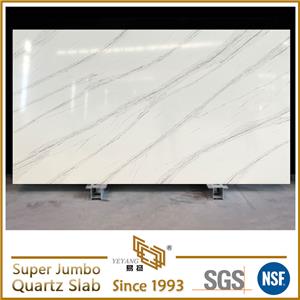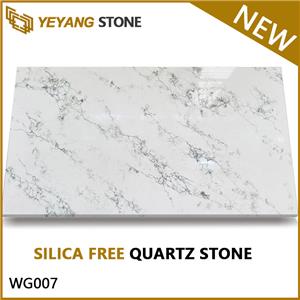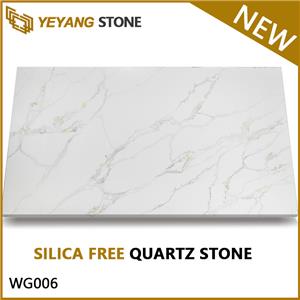Beyond Kitchen Countertops: How Is Quartz Redefining Design and Functionality?
When people think of quartz slab or quartz surface, their minds often jump to the smooth, polished kitchen countertops or the durable bathroom vanities. This conventional perception acts as an invisible constraint, limiting quartz slab to the label of a 'functional building material'. However, in the eyes of designers and engineers, quartz is no longer just a cold, rigid stone—it can be the dynamic interplay of light and shadow on an art museum wall, the warmth radiating from a dining table, or even a medium that tells urban stories. This evolving perception of quartz slab is quietly reshaping the boundaries of design creativity and commercial value.
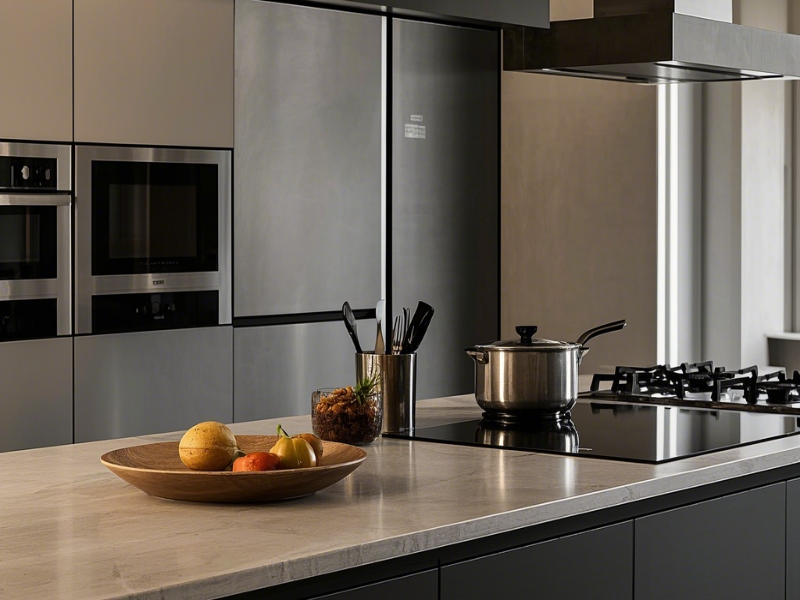
Designers are breaking conventions with an experimental spirit. In a private art museum in Tokyo’s Ginza district, architects have assembled ultra-thin quartz slabs with over 85% light transmittance into a curved wall. As natural light filters through the material, it casts an ink-like gradient projection on the floor. This innovation is made possible by a breakthrough in 5mm-thin cutting technology and a reinforced weather-resistant coating that prevents deformation due to temperature changes. At Milan Design Week, a curved tea table crafted from a single piece of engineered quartz became a showstopper. Thanks to vacuum vibration compression technology, the quartz slab remained pliable under high temperatures yet solidified into a steel-like hardness upon cooling, with edge precision controlled within 0.1mm. Even more astonishing, when visitors placed their smartphones on the table (quartz surface), a wireless charging module embedded beneath the quartz surface activated instantly—demonstrating a seamless fusion of technology and aesthetics.
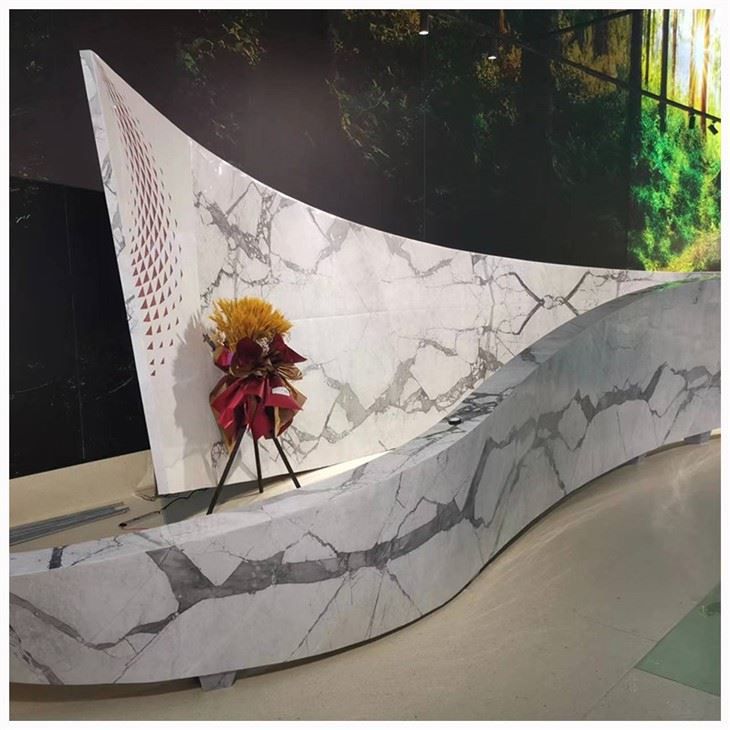
These innovations are not just solo acts by designers. In Eindhoven, the Netherlands, a collection of mosaic floor tiles made from recycled quartz slabs has become a bestseller. The golden flecks scattered across each tile were once discarded fragments from countertop processing. Through low-temperature sintering technology, these 'waste materials' are given new life, with designer editions even commanding prices 30% higher than traditional products. Meanwhile, in Shenzhen, China, a smart home brand has launched a temperature-controlled dining table, attracting attention from the hospitality industry. The integrated quartz surface heating system allows different zones to maintain precise temperatures—keeping a simmering hotpot broth and a chilled ice cream cup side by side with a temperature variance of no more than ±1℃. This disruptive design is propelling quartz surface from a functional background element to the forefront of social dining experiences.
For wholesalers, these cross-industry applications signify new profit opportunities. The standard quartz slabs, once considered commodity products, are now being segmented into premium categories like translucent art panels and smart integrated tabletops. A North American building materials distributor reports that translucent quartz surfaces have a gross profit margin of up to 45%, with customer repurchase rates 20% higher than traditional products. Meanwhile, a hybrid model combining modular standard components with on-demand customization has reduced the minimum order quantity from 1,000 square meters to just 100 square meters, enabling small and medium-sized distributors to compete in the high-value product segment. Marketing strategies are also evolving—when pitching to designers, the focus is no longer on compressive strength specifications but on the narrative of 'a quartz slab transformed into a city map through 48 hours of CNC engravin'. For end consumers, technical jargon is replaced with immersive experiences, such as a bathroom vanity that changes color upon touch.
These transformations are underpinned by a decade of technological advancements in the quartz industry. With a Mohs hardness of 7 and a density of 2.5g/cm³, engineered quartz surpasses natural stone in malleability. Precision CNC waterjet cutting can carve out patterns as fine as a strand of hair, while gradient dyeing technology ensures a seamless transition from cherry blossom pink to deep ocean blue, passing a 24-hour colorfastness test that guarantees no fading for over two decades. Even more revolutionary is the shift in cost dynamics—when cross-industry applications achieve economies of scale, the unit cost of custom-cut quartz furniture is actually 15% lower than that of traditional countertops, thanks to digital modeling that optimizes raw material utilization.
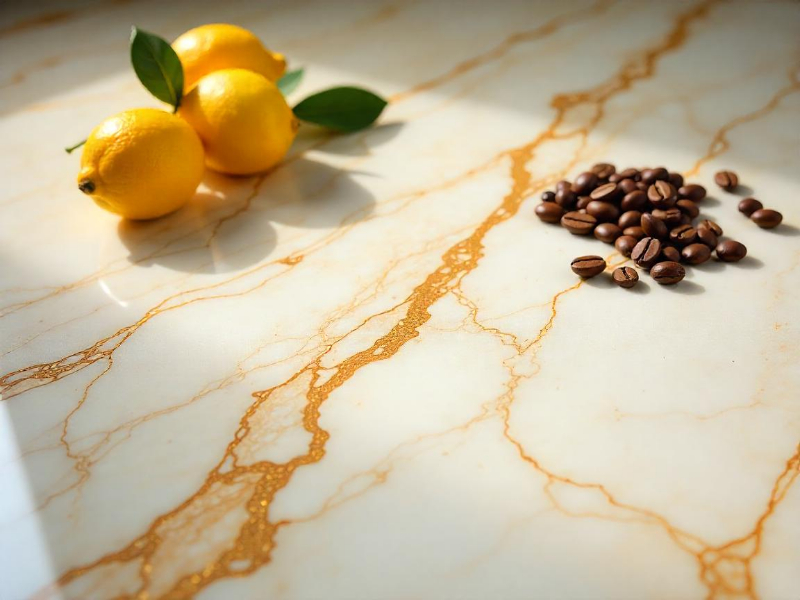
(Modern quartz surface shows a gorgeous texture in the sun, and the color transitions are natural)
Looking back from the spring of 2025, the evolutionary trajectory of quartz slab is becoming increasingly clear. At the Dongdaemun Design Plaza in Seoul, composite quartz surfaces blended with acrylic create luminous pillars that rival the visual appeal of emerald gemstones. In the kitchen of a Michelin-starred restaurant in New York, chefs access recipe data directly on a quartz surface embedded with a touchscreen. Meanwhile, at a sustainability exhibition in London, an 'old-for-new' recycling program is drawing eco-conscious consumers—offering decorative items crafted from reclaimed quartz slabs in exchange for worn-out countertops. These fragmented innovations are coming together to paint an industry landscape beyond imagination: when quartz is no longer confined to 'kitchen countertops', it transcends its physical form to become a cross-disciplinary medium connecting design, technology, and commerce.
At its core, this transformation is an elevation in material perception. Quartz slab is no longer merely something to be cut; it is a medium for creative inspiration. It is no longer a functional backdrop but a narrative centerpiece. Designers find breakthroughs in tradition, wholesalers discover new market potential, and consumers experience glimpses of the future in their everyday interactions. As the inscription at the entrance of the Materials Lab at Politecnico di Milano reads: 'The only limits we face are not in the material itself, but in the way we look at it'. As quartz steps out of the kitchen and into museums, light installations, and beyond, it proves one fundamental truth: real innovation begins the moment we break free from definitions. For a curated catalog of quartz cross-industry applications or product selection strategies, visit our resource center. Let's redefine the boundaries of material possibilities together, making every quartz surface a starting point for innovation.
Yeyang Quartz Stone is the leading exporter and manufacturer of Quartz Slabs in China sice 2012. We offer more than 300+ quartz slabs,including white, grey,blue,green,beige,red, black quartz slab etc.
Our main products include wholesale quartz slabs, customized quartz slabs, quartz kitchen countertops, quartz bathroom countertops, cut/pre-fabricated slabs, marble, granite, and more.
If you are interested, feel free to contact us

